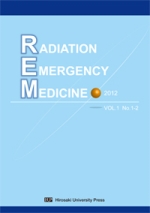Risk Communication as a Strategic Tool to Raise Awareness of Radon Health Effects and to Reduce Exposures to the Public
View article content
James Mc Laughlin
School of Physics, University College Dublin, Ireland
- Abstract
Excluding accidental radiation exposures and those received in radiation therapy the largest and most variable component of dose to the public is due to exposure to the naturally occurring radioactive gas radon and its progeny in their homes. On a global basis the annual dose to the general population from radon has been estimated to be 1.2 mSv per year. In many countries however, doses of some tens of mSv/year occur in high radon areas. The principal epidemiologically established risk from radon exposure is lung cancer. Due to synergistic effects in combination with smoking it can greatly amplifies the already high lung cancer risk due to smoking alone. Radon is classified as a Group 1 human carcinogen and is considered by the World Health Organization as being responsible for between 3 and 14% of lung cancers. An important component of a national strategy to reduce public exposure to radon is risk communication. Its main objectives are to raise awareness of the hazard from radon and to encourage radon measurement in homes and to take action to reduce indoor radon concentrations. Here an overview is given of the various components of radon risk communication such as the identification of target audiences, the messages to be used and the appropriate channels of communication.



